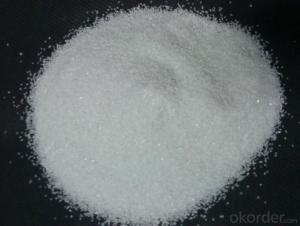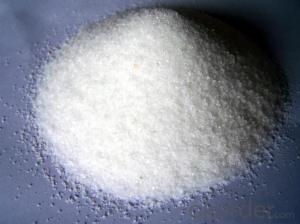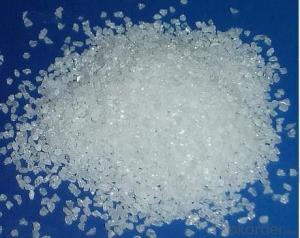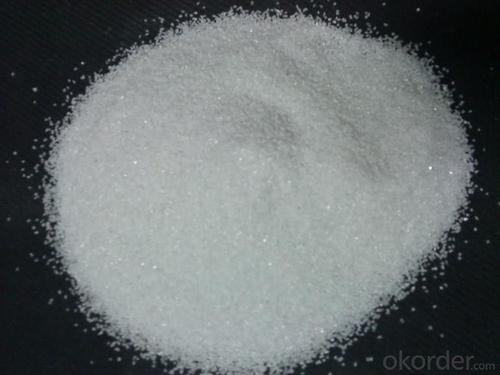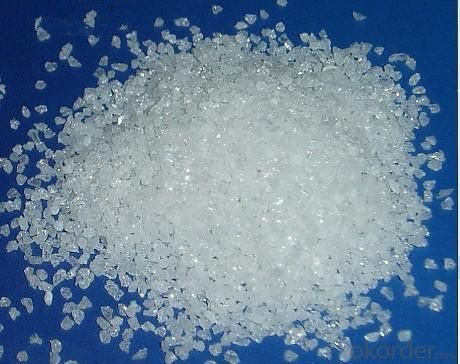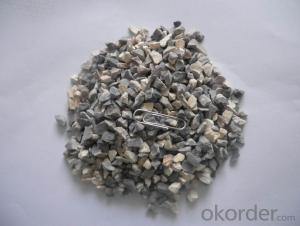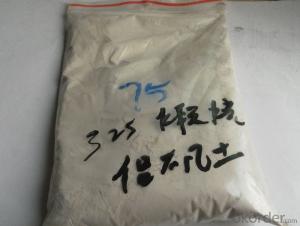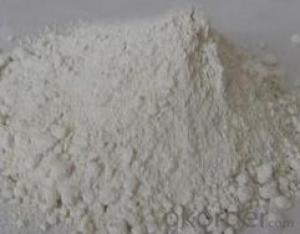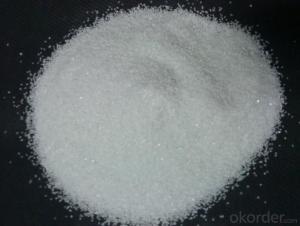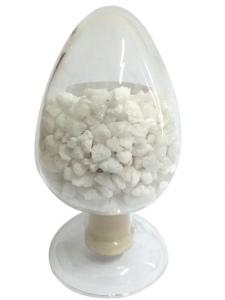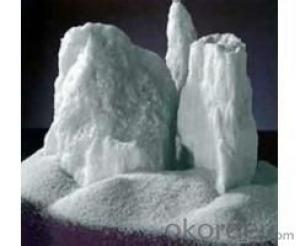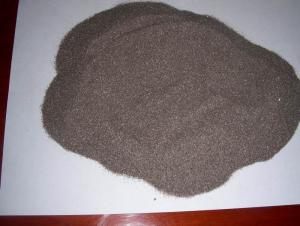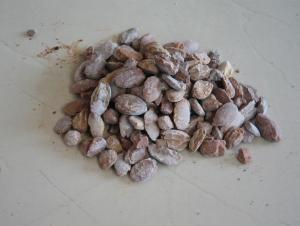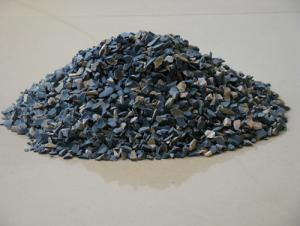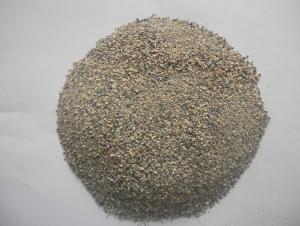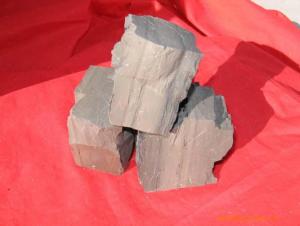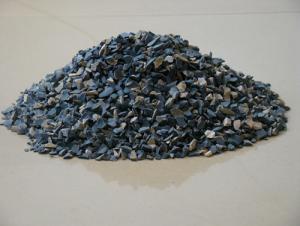High Quality White Fused Alumina Raw Materials for Refractory
- Loading Port:
- Tianjin
- Payment Terms:
- TT OR LC
- Min Order Qty:
- -
- Supply Capability:
- 1000MT m.t./month
OKorder Service Pledge
Quality Product, Order Online Tracking, Timely Delivery
OKorder Financial Service
Credit Rating, Credit Services, Credit Purchasing
You Might Also Like
Specification of white fused alumina
Item | B.D(g/cm3) | Apparent Porosity | Chemical Composition | |||
AL2O3 | Fe2O3 | SiO2 | NaO2 | |||
WFA | 3.7 | 7.8% | 99.2%min | 0.1%max | 0.2%max | 0.3%max |
Packaging & Shipping
In 1MT jumbo bag or as the buyer request.
We ship the cargo in 20' GP containers,each container loads 25MT/20bags.
Application of white fused alumina
1.Light-weight insulating refractories
2.Shaped and unshaped refractories
3.Pre-cast shapes and castables
4.High Alumina Refractory mixes and gunning mixes
- Q: What are the basic requirements of continuous casting for molten steel? What are the requirements for refractory materials?
- Refractories for continuous casting is an important part of the continuous casting machine, in addition to the characteristics of general refractory material, also for the purification of molten steel and improve the steel quality, stable molten steel temperature and composition, control and regulate the flow of the molten steel and other functions, so it is called functional refractories. The above is provided by the China Technology Department
- Q: The following statement is correct: artificial corundum has a high melting point and can be used as a high grade refractory material. The main component is silica dioxide
- 1. corundum is the main component of alumina. 2. agate is the main component of silica. 3. is right. 4. glass is silicate. 5. solar cells are made from monocrystalline silicon. So 3.5 correct, choose D.
- Q: What are the differences and connections between softening temperature of the refractory under a fixed load and thermal resistant creep property of the refractory?
- The result of refractoriness under load is temperature while the result of creep is percentage of deformation. Refractoriness under load and creep can be tested by an instrument. Refractoriness under load reflects the temperature in which the deformation reaches a certain degree under the condition of load. Creep reflects the deformation refractory has under the condition of constant temperature and load. Both refractoriness under load and creep are important criterion for the operating temperature of refractory.
- Q: What high-molecular polymers can be used as fire-resistant material binder?
- Melamine resin should be compounded with fire-resistant material and acrylic acid material is easy to burn. But high-molecular polymers can be used along with the above two. Polysulfone is featured by heat resistance and high temperature resistance. Polyurethane is difficult to process and compound with fire-resistant material. Phenolic resin is not easy to burn. Epoxy is expensive and self-extinguishing once away from fire.
- Q: What are grade classifications of the external walls for fireproofing?
- 1. The thermal insulation material of level A combustion performance: Rock wool, glass wool, foam glass, foamed ceramics, foam cement, hole-closed perlite, etc. 2. combustion performance is level B1 insulation materials: Extruded polystyrene board (XPS) after special treatment / Special treatment of polyurethane (PU), phenolic aldehyde and gelatine powder polyphenyl granule 3, combustion performance is level B2 insulation material: Molding polystyrene board (EPS), extruded polystyrene board (XPS), polyurethane (PU), polyethylene (PE), etc. See the 2009 edition construction technical measures 4.3.6 Level A insulation material is only for fireproofing, but its thermal insulation performance is not better than organic XPS \\ EPS and other materials. I feel the best insulation materials should be modified phenolic board, which can keep insulation and fireproofing, but the comprehensive unit price is very expensive.
- Q: What is the fire endurance of fireproof glass cotton?
- The highest temperature of fireproofing glass wool can be above 200 degrees, so it can be used for a long time,it's difficult to judge the special usage time, but its usually about 3 months and 8 hours every day.
- Q: What is the definition and classification of amorphous fire resistance materials?
- 9.8. brick made of refractory bone material and powder material can be used directly or after adding appropriate liquid formulation Refractory paint. Refractory slinging material 6. Prefabricated cubes, bonding agent or other additives. fire-resistance sparying material compround additives. Refractory pressed into the material, binder. Refractory ramming material 3, The material is a new fire proof material without calcination Heavy aggregate and lightweight aggregate: Inorganic binding agent and organic bond, its fire resistance is not less than 1580. Refractory castables 2 mouldable refractory Classification according to the type of bonding agent: 1. Classification according to refractory aggregate. According to the production and construction method, refractory mud or refractory mire, with a certain proportion of the mixture
- Q: What are the differences of ceramics and refractories? Is the ceramics belonging to refractories?
- Ceramic pottery ceramic collectively known species of high water absorption and low-grade sinter clay brick, tile-like material; high stone kinds of porcelain clay plus clay and other raw sintered body strength, low water absorption bowls, plates and other kinds of refractory high temperature structural materials are all non-machine ceramic refractory metal material belonging to a broader definition of ceramic refractory ceramic can be attributed to the high temperature ceramic refractory.
- Q: How many types of fire-resistant material?
- 1. Acid fire-resistant material refers to one with more than 93% SiO2. It is featured by resistance to the corrosion of acidic slag ad high temperature and easy to react with alkaline molten slag. 2. Alkaline refractory material generally refers to one with magnesium oxide or magnesium oxide and calcium oxide as the main component. It has high refractoriness and strong resistance to basic slag. 3. Silicate aluminum refractory material refers to one with SiO2, Al2O3 as the main component. According to the content of Al2O, it can be divided into three categories: half siliceous (15-30% Al2O3), clay (Al2O3 30 ~ 48%), high aluminum (more than 48% of Al2O3). 4. Fused cast refractory material refers to shaped refractory products made by high temperature melting and casting.
- Q: Are there any differences between insulation and refractory materials ?
- Refractory materials can resist more than 1200 degrees, some of which are not insulation materials, such as firebricks, which can directly contact with heat source, has little insulation effect. Ceramic fiber, high silica, etc. are all refractory materials which can insulate. Insulation materials with poor performance usually is lower than 800 degrees, which have large thermal resistance, and low thermal conductivity, high porosity. Thus they reduce the thermal loss. To put it simply, insulation materials store most of the heat and only let a small part of heat lose through the air, thus the heat has been isolated. Glass fiber, rock wool, flexible material for thermal insulation, etc.
Send your message to us
High Quality White Fused Alumina Raw Materials for Refractory
- Loading Port:
- Tianjin
- Payment Terms:
- TT OR LC
- Min Order Qty:
- -
- Supply Capability:
- 1000MT m.t./month
OKorder Service Pledge
Quality Product, Order Online Tracking, Timely Delivery
OKorder Financial Service
Credit Rating, Credit Services, Credit Purchasing
Similar products
Hot products
Hot Searches
Related keywords
